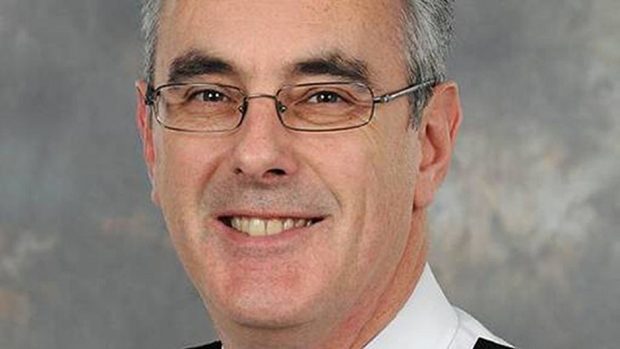Scotland’s newly appointed chief constable was the mastermind of a failed bid to merge controls rooms south of the border, it has emerged.
Philip Gormley was yesterday unveiled as the successor to the embattled Sir Stephen House at Police Scotland, which has been under fire following a series of controversies.
Mr Gormley has been at forefront of a the fight against organised crime throughout the UK in his role as deputy director of the National Crime Agency and a commander of special operations at the Metropolitan Police – responsible for firearms and aviation security, as well as counter-terrorism.
He has also held the rank of chief constable of Norfolk Constabulary and deputy chief constable of West Midlands Police during his 30-year career.
But yesterday, it emerged that during the 53-year-old’s time as chief constable he was behind a plan to merge the control rooms of neighbouring forces Norfolk and Suffolk.
Mr Gormley, who takes up his role in Scotland on January 5, was eventually forced to abandon his “brainchild project” in the face of strong opposition in 2014.
And last night, local politicians fighting plans to shut control rooms in Aberdeen and Inverness said they hoped he had “learned his lesson on control room centralisation”.
North East MSP Alison McInnes, the Liberal Democrat’s justice spokeswoman, said: “We have seen the difficulties that have been caused as a result of the closure of police control rooms in Scotland.
“Our new chief constable will want to pay close attention to the recent HMICS report on the pressure that staff are operating under.
“As a fresh broom, the new chief constable has the chance to ensure that the mistakes of the past are not repeated.
“We must hope that he has learned his lesson on control room centralisation.”
Labour’s Lewis Macdonald added: “I hope he will realise that if Norfolk and Suffolk was too large an area to rely on a single central control room, then he will find the whole of
Scotland to be run from the central belt is even more difficult and risky and he will draw the appropriate conclusions.”
Mr Gormley said it will be his job “to ensure our service strikes the right balance between local community approaches and the many challenges we face from organised criminals, cyber crime and extremism”.
Councillor Martin Greig, chair of Aberdeen Community Safety Partnership, said: “Officers and staff are vital parts of the whole organisation and it would help to have a credible chief officer perspective on this heavy loss of staff.
“The prospect of losing control rooms and staff in our area is hugely worrying. We need them to work closely with their officer colleagues to keep up the fight against crime.”
